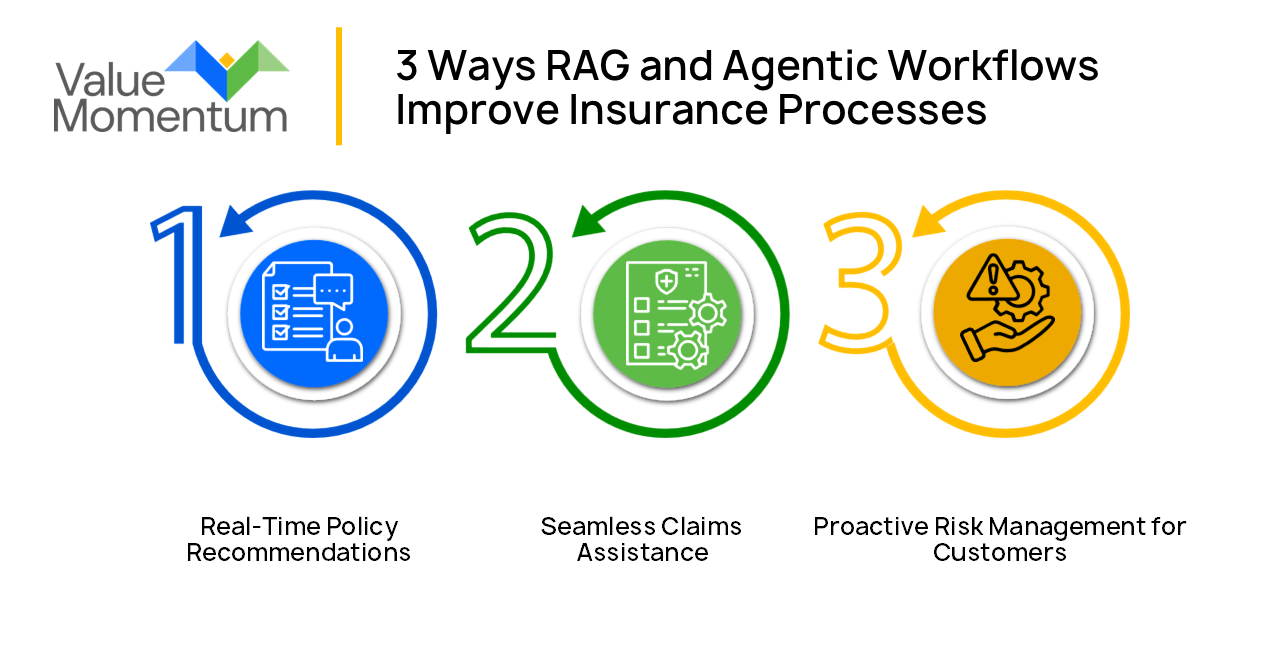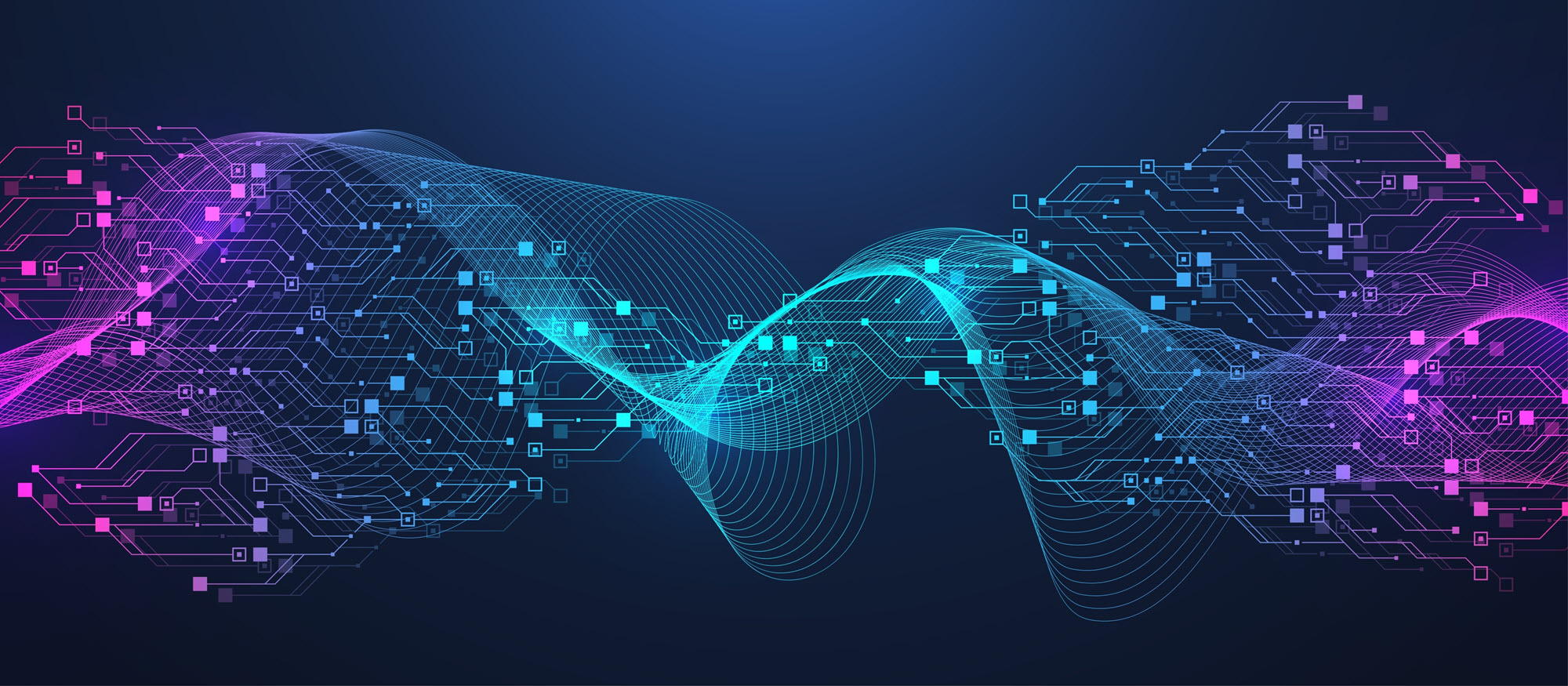In an industry that thrives on data, innovation is no longer optional. It’s essential. Insurers are increasingly looking for ways to deliver more personalized services, faster resolutions, and smarter decision-making, all while navigating the complexities of customer expectations, operational efficiency, and compliance. The convergence of two advanced technologies, retrieval-augmented generation (RAG) and agents (also known as agentic workflows), is helping carriers meet these challenges head-on.
Imagine having a system that can retrieve up-to-date, contextually relevant information from multiple sources and, using that data, execute complex tasks without missing a beat. This is where RAG and AI-powered agents come together to create intelligent workflows that not only automate processes but also enhance customer satisfaction and operational agility.
Let’s explore how these technologies are making an impact, what “agentic workflow” really means, and why they represent the future of insurance technology.
What Are Agents, Tools, and Agentic Workflows?
Before diving into specific use cases, let’s clarify the key terms:
- Retrieval-Augmented Generation (RAG): RAG is an advanced AI technique that enhances generative AI (GenAI) models by combining them with real-time data retrieval. Instead of relying solely on pre-trained knowledge, RAG retrieves relevant information from external sources — such as databases, documents, or APIs — and uses that data to generate more accurate, contextually relevant responses. This ensures that the model’s outputs are always grounded in the most current and reliable information, making it especially valuable in industries like insurance, where up-to-date data is critical for decision-making.
- Agents: AI agents are autonomous software programs that can carry out specific tasks based on given instructions. In an agentic workflow, these agents interact with various tools, databases, and systems to retrieve data, execute tasks, and make decisions. For instance, an AI agent could retrieve policyholder information from a database and use it to generate a personalized policy renewal recommendation.
- Tools: Tools refer to the external systems, APIs, or functions that agents interact with. These might include customer relationship management (CRM) systems, underwriting platforms, claims processing software, or even external data sources like weather services. Tools are what enable agents to gather information, process data, or trigger specific actions.
- Agentic Workflow: When agents and tools work together, they create an agentic workflow — a chain of automated tasks that deliver outcomes based on predefined objectives. In insurance, agentic workflows can handle everything from pulling customer data to updating claims records, ensuring that tasks are completed accurately and efficiently with minimal human intervention.
Now that we understand the components, let’s see how RAG and agentic workflows are transforming insurance operations.
How RAG and Agentic Workflows Elevate Insurance Processes
In today’s fast-paced world, enhancing operations to keep up with consumer expectations is vital for an insurer to stay competitive. Slow, outdated processes and communications are not going to cut it with customers, especially if competitors are stepping up to the plate.
Here are three major ways RAG and agentic workflows can improve insurance processes and strengthen customer relationships.

1. Real-Time Policy Recommendations
When a customer reaches out to an agent, broker, or carrier for a policy recommendation, they expect quick and personalized advice. RAG enables the retrieval of critical data, such as the customer’s insurance history, market trends, and even recent life changes like a new car or home purchase — all in real time. This data is then analyzed by AI agents, which can offer tailored recommendations based on the customer’s unique needs.
Personalization is key in today’s market. Customers don’t want a one-size-fits-all policy; they want coverage that fits their exact situation, delivered quickly and efficiently. This has been commonplace in personal auto and some other lines of business in recent years, but now RAG and AI agents make it possible to provide those personalized recommendations instantly. This holds true even for more complex commercial lines of business, deepening customer trust, enabling agents to sell better, and improving overall satisfaction.
2. Seamless Claims Assistance
Claims processing has always been a sticking point in the insurance world. Customers need fast resolutions, but gathering the necessary data to process a claim can slow things down. RAG revolutionizes this process by retrieving all relevant claims documentation, policy details, and even external factors like weather data (in the case of a natural disaster claim). AI agents then guide the customer through the claims process, providing real-time updates, accurate claims estimates, and automated follow-ups.
In an industry where customer loyalty is often determined by claims experiences, RAG and AI agents provide a competitive edge. Augmenting the claims experience with RAG and agentic workflows can help customers experience a streamlined, transparent claims process where updates and outcomes are communicated clearly and promptly, while insurance companies can resolve claims faster, reduce manual errors, and improve overall claims satisfaction.
3. Proactive Risk Management for Customers
One of the greatest challenges in insurance is predicting and managing risk. With RAG and agents, insurers can offer proactive risk management advice to their customers. For example, RAG retrieves key data about a customer’s home, neighborhood crime rates, or weather risks. AI agents then analyze this information and suggest actions to mitigate risks, such as purchasing flood insurance for homes in newly identified high-risk zones or upgrading home security systems.
Leveraging RAG and agents provides customers with proactive, data-backed recommendations that help protect them from future losses. This not only strengthens the customer-insurer relationship but also reduces the likelihood of future claims, benefiting both parties.
The Future of Insurance Operations
For technology and business executives in the P&C industry, the combination of RAG and agentic workflows presents a unique opportunity to redefine the way insurance companies operate. These technologies offer more than just automation; they enable a higher level of personalization, efficiency, and responsiveness that aligns perfectly with the needs of today’s customers.
RAG ensures that the data feeding into decisions is accurate and up to date, while AI agents execute the workflows that drive these decisions. Whether it’s providing personalized recommendations, speeding up claims processing, or offering real-time support, this powerful duo allows insurance companies to operate at the cutting edge of innovation.
The future of insurance isn’t just faster or more automated, it’s smarter, more connected, and deeply attuned to the needs of the customer. By embracing RAG and agentic workflows, insurers can stay ahead of the curve, delivering exceptional service while optimizing internal operations.
To find out more about how insurers are optimizing their operations and using data to maximize their business, read the case study Erie Insurance Optimizes Data Operations With MarkLogic Enterprise Data Hub on AWS.




